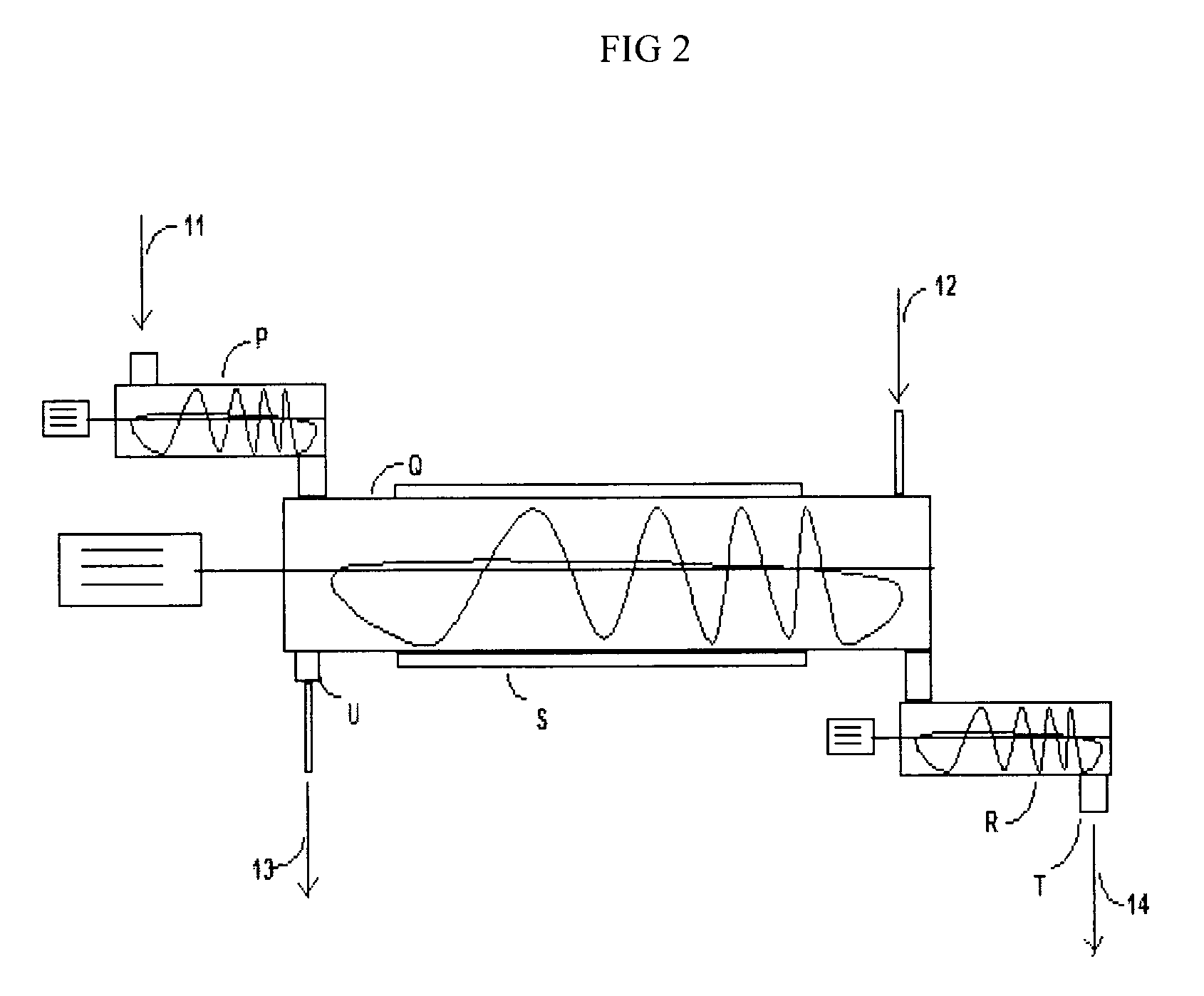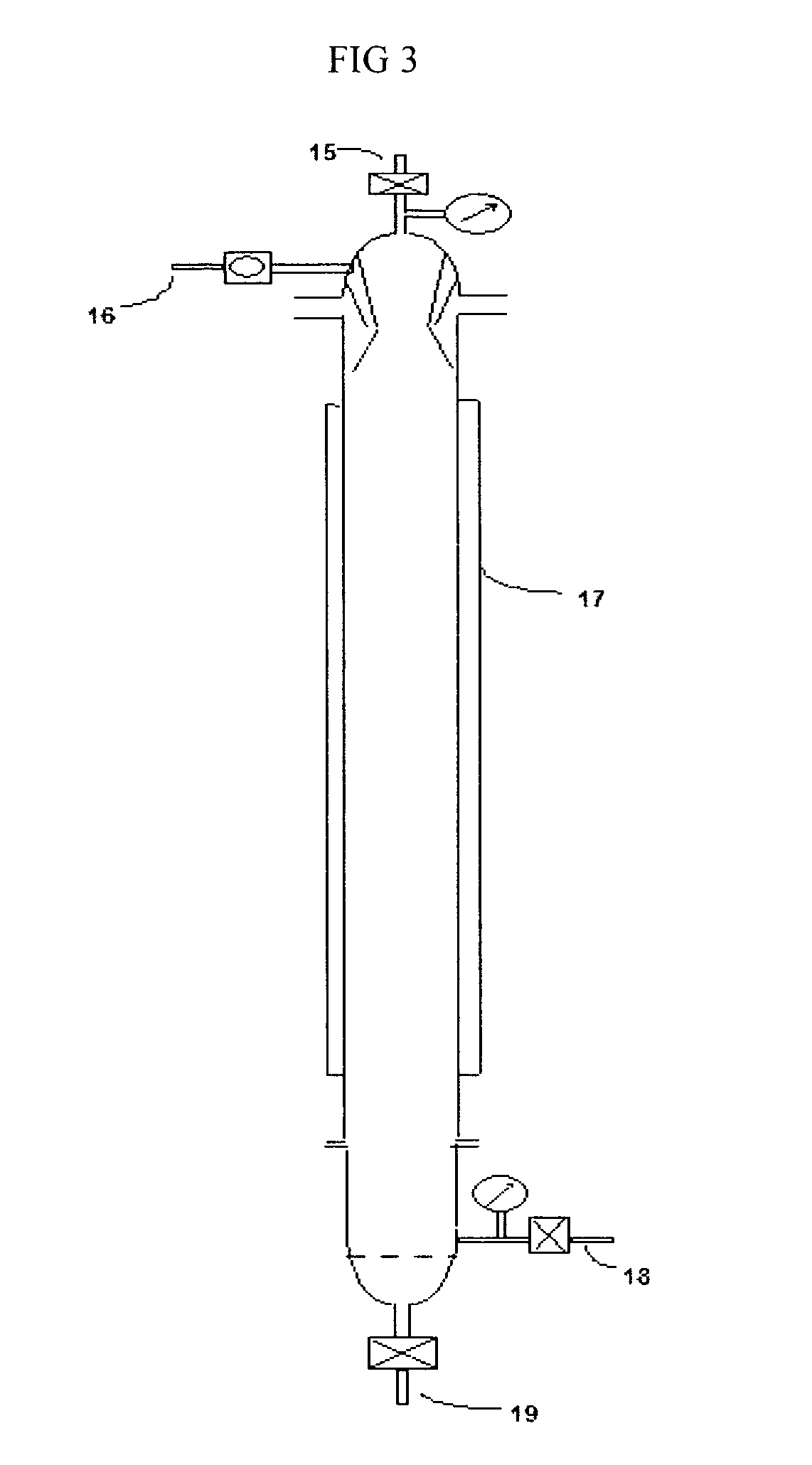Complete liquefication of lignocellulosic agrowaste to form liquid biofuels
a technology of lignocellulosic agrowaste and liquid biofuel, which is applied in the direction of biofuels, fuels, microorganisms, etc., can solve the problems of limited energy yield of methods known and practiced in the art to date in the direction of liquid biofuel, and achieve the effects of increasing energy yield, and reducing cost per gj
- Summary
- Abstract
- Description
- Claims
- Application Information
AI Technical Summary
Problems solved by technology
Method used
Image
Examples
example 1
[0041]50 Kg of sugarcane bagasse with a moisture content of ca. 10% by weight was mixed with 100 L of water and the mixture was loaded into a 500 L stainless steel pressure vessel fitted a with a steam jacket. The temperature was raised to ca. 400 K when the pressure inside the vessel reached ca. 0.4 MPa. After 4 hours the vessel was cooled and the contents separated into a liquid fraction and a solid fraction using a centrifuge. The solid fraction consisting of the residue of the sugarcane bagasse was washed with 50 L of boiling water twice in succession and then air dried. The dry weight of this fraction was determined to be 31 Kg, 69% by weight. The liquid extract was about 160 L and contained soluble sugars weighing ca. 15 Kg.
example 2
[0042]The sugarcane bagasse residue obtained as described in Example 1 was mixed with 200 L of an extractant liquid consisting of a mixture of equal volumes of water and acetone to which had been added 1.6 Kg of iron(III) chloride and 1 L of a 36% by weight of an aqueous solution of hydrochloric acid. The mixture was loaded into a 500 L stainless steel pressure vessel fitted a with a steam jacket. The temperature was raised to ca. 400K when the pressure inside the vessel reached ca. 0.9 MPa. After 4 hours the vessel was cooled and the contents separated into a liquid fraction and a solid fraction using a centrifuge. The solid fraction consisting of the residue of the sugarcane bagasse was washed first with 50 L of hot acetone and then with 50 L of boiling water and then air dried. The dry weight of this fraction was determined to be 19 Kg, 42% by weight. The liquid extract was about 260 L and the acetone contained therein was recovered by distillation whereupon the lignin precipitat...
example 3
[0043]The solid lignin obtained in Example 2 was placed in a 50 L round-bottomed flask and 17 L of anhydrous ethanol was added followed by 4 L of acetone. 0.1 Kg of Amberlyst 15 was added and the mixture stirred for 30 minutes until the lignin had dissolved completely. The catalyst was then filtered and the filtrate was bottled.
PUM
| Property | Measurement | Unit |
|---|---|---|
| temperature | aaaaa | aaaaa |
| temperature | aaaaa | aaaaa |
| size | aaaaa | aaaaa |
Abstract
Description
Claims
Application Information
 Login to View More
Login to View More - R&D
- Intellectual Property
- Life Sciences
- Materials
- Tech Scout
- Unparalleled Data Quality
- Higher Quality Content
- 60% Fewer Hallucinations
Browse by: Latest US Patents, China's latest patents, Technical Efficacy Thesaurus, Application Domain, Technology Topic, Popular Technical Reports.
© 2025 PatSnap. All rights reserved.Legal|Privacy policy|Modern Slavery Act Transparency Statement|Sitemap|About US| Contact US: help@patsnap.com



